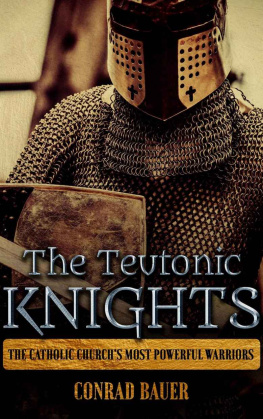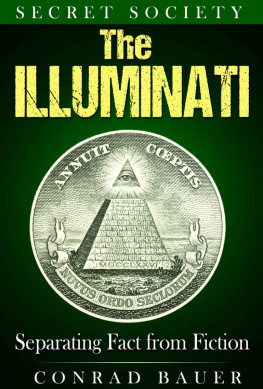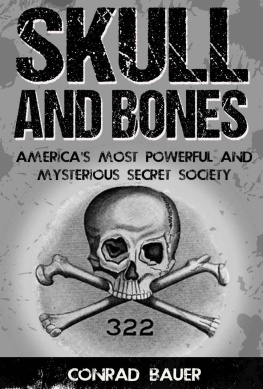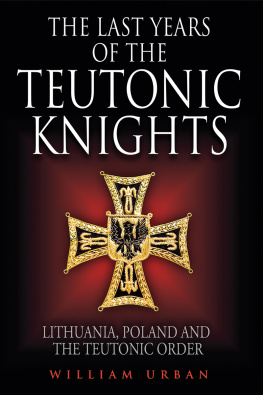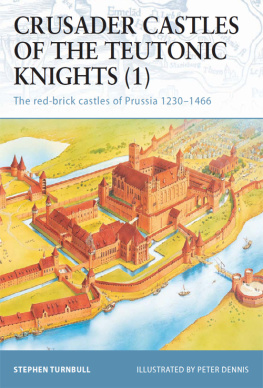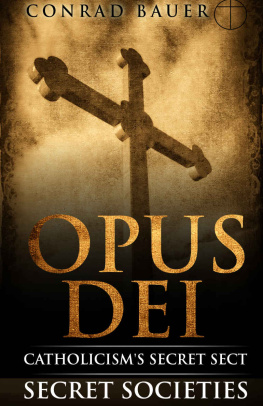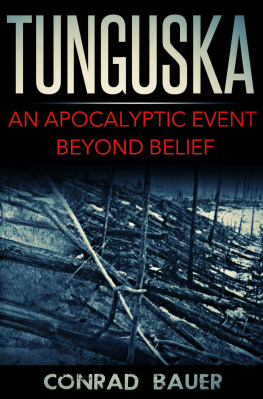Conrad Bauer - The Teutonic Knights: The Catholic Church’s Most Powerful Warriors
Here you can read online Conrad Bauer - The Teutonic Knights: The Catholic Church’s Most Powerful Warriors full text of the book (entire story) in english for free. Download pdf and epub, get meaning, cover and reviews about this ebook. year: 2018, publisher: Maplewood Publishing, genre: Art. Description of the work, (preface) as well as reviews are available. Best literature library LitArk.com created for fans of good reading and offers a wide selection of genres:
Romance novel
Science fiction
Adventure
Detective
Science
History
Home and family
Prose
Art
Politics
Computer
Non-fiction
Religion
Business
Children
Humor
Choose a favorite category and find really read worthwhile books. Enjoy immersion in the world of imagination, feel the emotions of the characters or learn something new for yourself, make an fascinating discovery.
- Book:The Teutonic Knights: The Catholic Church’s Most Powerful Warriors
- Author:
- Publisher:Maplewood Publishing
- Genre:
- Year:2018
- Rating:5 / 5
- Favourites:Add to favourites
- Your mark:
- 100
- 1
- 2
- 3
- 4
- 5
The Teutonic Knights: The Catholic Church’s Most Powerful Warriors: summary, description and annotation
We offer to read an annotation, description, summary or preface (depends on what the author of the book "The Teutonic Knights: The Catholic Church’s Most Powerful Warriors" wrote himself). If you haven't found the necessary information about the book — write in the comments, we will try to find it.
The Teutonic Knights: The Catholic Church’s Most Powerful Warriors — read online for free the complete book (whole text) full work
Below is the text of the book, divided by pages. System saving the place of the last page read, allows you to conveniently read the book "The Teutonic Knights: The Catholic Church’s Most Powerful Warriors" online for free, without having to search again every time where you left off. Put a bookmark, and you can go to the page where you finished reading at any time.
Font size:
Interval:
Bookmark:
The Teutonic Knights
The Catholic Churchs
Most Powerful Warriors
Conrad Bauer
Copyrights
All rights reserved 2018 by Conrad Bauer and Maplewood Publishing. No part of this publication or the information in it may be quoted from or reproduced in any form by means such as printing, scanning, photocopying, or otherwise without prior written permission of the copyright holder.
Disclaimer and Terms of Use
Efforts have been made to ensure that the information in this book is accurate and complete. However, the author and the publisher do not warrant the accuracy of the information, text, and graphics contained within the book due to the rapidly changing nature of science, research, known and unknown facts, and internet. The author and the publisher do not hold any responsibility for errors, omissions, or contrary interpretation of the subject matter herein. This book is presented solely for motivational and informational purposes only

JUST FOR MY READERS!
100% FREE BONUS!
To thank you for downloading my book here is a FREE book that I am sure you will enjoy! Click here to get your FREE gift.
FOR A LIMITED TIME ONLY
this 100% FREE book
The Most Haunted Places in America
Your Personal Guide to the Scariest Destinations in the United States

Click here to download your FREE copy!
The Teutonic Knights were forged in the thick of battle, at the height of the Crusades in 1190 AD. But they werent created to wield the swordtheir first commission was to take care of the sick and the injured. Formed in the city of Acre, in what is now Israel, in the immediate aftermath of the fall of Jerusalem, the Teutonic Knights initially established field hospitals to aid the burgeoning number of wounded soldiers passing through this great way station of the Holy Land.
Jerusalem had been captured by the Crusaders scarcely 100 years before after Pope Urban II ordered knights from all over Europe to reclaim the city for Christ in 1095 AD. This First Crusade was quite successful; the Islamic defenders of the Holy Land were caught completely off guard by the alien invaders who suddenly stormed across the horizon with their strange metallic armor glinting in the desert sun. But a century laterafter an ill-fated Second Crusadeeverything had changed. A charismatic new Muslim leader named Saladin had managed to take back a large portion of what he believed to be Islamic real estate. Now on the defensive, the Crusaders had been forced to move the capital of their Kingdom of Jerusalem to the port city of Acre on the northeast coast of Israel.
And so it was that a Third Crusade was launched to regain the lost land. The German contingent was led by the Holy Roman Emperor Frederick Barbarossaright up until he fell into a river in Armenia and drowned. This freak accident sent shock waves throughout the entire Crusader army, and with the loss of their Emperor, most of the German troops simply turned around and went home. The remaining Crusaders were mostly Britons and Frenchmen who found themselves woefully unprepared for the rigors of the Middle East.
Many of these men contracted illnesses related to the heat, contaminated water, and the like, and soon enough disease was running rampant through the Crusader camp. The Knights Hospitaller, established shortly after the First Crusade, were already managing a number of hospitals for the sick and dying, but it soon became clear that more was needed. A new monastic order called the Order of the Hospital of St. Mary was therefore created, and it was this group that would later become known as the Teutonic Knights.
Coming to the fold later than the Templars and the Hospitallers, the Teutons were somewhat like the little brother who has to fight for the remaining scraps at the table. Still, the Teutonic Knights of Acre ended up in control of the port of that famous sea city, becoming quite literally the gatekeepers of the Holy Landand the tolls they collected turned out to be extremely profitable for the Order.
But their tenure in Acre was not to last. As the Islamic armies continued to roll back Crusader gains in the Middle East, seizing Jerusalem and much of the surrounding territory, the Teutonic Knights would soon have to outsource their talents for a variety of endeavors. Leaving their first estate and vocation behind, they would become free agents, spending the next few centuries chasing pagans, infidels, and heretics wherever they could find them.
In 1210, the Teutonic Knights elected the man who was arguably their greatest leader of all time: Grand Master Hermann von Salza. A man of pure ambition, a real mover and shaker, Salza was a true medieval mogul. He was always promoting his Teutonic brand, and he was always on the lookout for the next big project for the Order. Furthermore, he had all the right connections to make sure that the Teutonic Knights always had the resources they needed to succeed. Grand Master Salzas most finely honed martial art was his ability to convince the wealthy men and institutions of his era to put their money and their moral authority behind the causes he presented to them.
Early evidence of this diplomatic skill came in 1211 when Salza secured a new home base for the Teutons by acceding to the entreaties of King Andrew II of Hungary that they set up shop in nearby Transylvaniathe future stomping grounds of Vlad the Impaler (Dracula). In the centuries to come, Hungary would constantly be imperiled by its close proximity to the powerful Ottoman Empire. But at this point in time, King Andrew believed that he could bank on the Teutonic Knights to hold back the lesser threats posed by disorder in the wild borderlands. In exchange for their services, Andrew promised the Knights land and special immunities from taxes, which allowed them to bring settlers to the frontier without having to pay any indemnities to the Hungarian Crown. The partnership seemed quite successful at first. The Knights moved in, built fortresses, brought settlers, kept the peace, and soon felt confident enough to embark on their first major military engagement under Salza.
This was the Fifth Crusade, which came on the heels of the disastrous Fourth Crusade wherein Christian Crusaders had sacked Christian Constantinople without (for the most part) even reaching the Holy Land. The Fifth Crusade was the Vaticans effort to right the course of the Crusader ship by taking the fight back to the Islamic world with an invasion of Egypt. The plan was to use Egypt as a backdoor into Israel to reclaim lost territory.
In June of 1218, a combined force of Hospitallers, Templars, and yes, Teutonic Knights landed at the Egyptian coastal town of Damietta. The going was tough from the beginning, and the Templar Grand Master actually died shortly after going ashore. Despite this loss, the Crusaders combined forces duly laid siege to Damietta and subdued it in fairly short order. Witnesses to the battle were particularly impressed by the manner in which the Crusaders rapidly overcame obstacles of the terrain. They used mobile pontoons to traverse a variety of landscapes, crossing crocodile-infested swamps with relative ease. It was obvious that the various orders had done their homework, and with the help of veteran Crusaders already familiar with the rigors of the Middle East, they were able to overcome daunting odds.
So impressive was their victory that the Sultan of EgyptAl-Kamil, the brother of the mighty Muslim warrior Saladinquickly offered the Crusaders a grand bargain. He proposed that he would hand over Jerusalem in exchange for the captured city of Damietta. Some of the Crusadersthe Teutonic Knights among themwere ready to accept this offer and go back to their faraway homes in Europe as victors. But it wasnt to be.
Next pageFont size:
Interval:
Bookmark:
Similar books «The Teutonic Knights: The Catholic Church’s Most Powerful Warriors»
Look at similar books to The Teutonic Knights: The Catholic Church’s Most Powerful Warriors. We have selected literature similar in name and meaning in the hope of providing readers with more options to find new, interesting, not yet read works.
Discussion, reviews of the book The Teutonic Knights: The Catholic Church’s Most Powerful Warriors and just readers' own opinions. Leave your comments, write what you think about the work, its meaning or the main characters. Specify what exactly you liked and what you didn't like, and why you think so.

